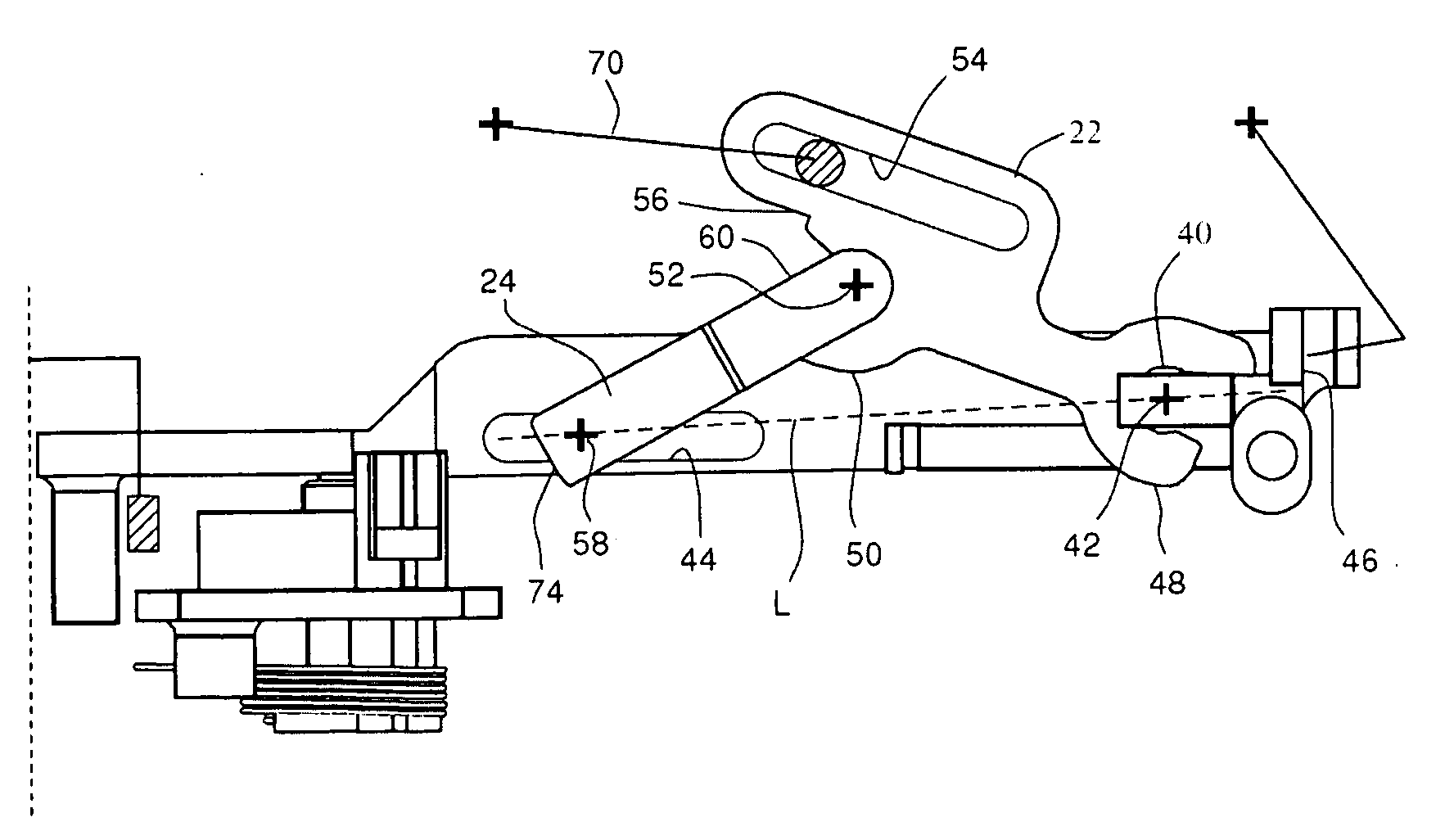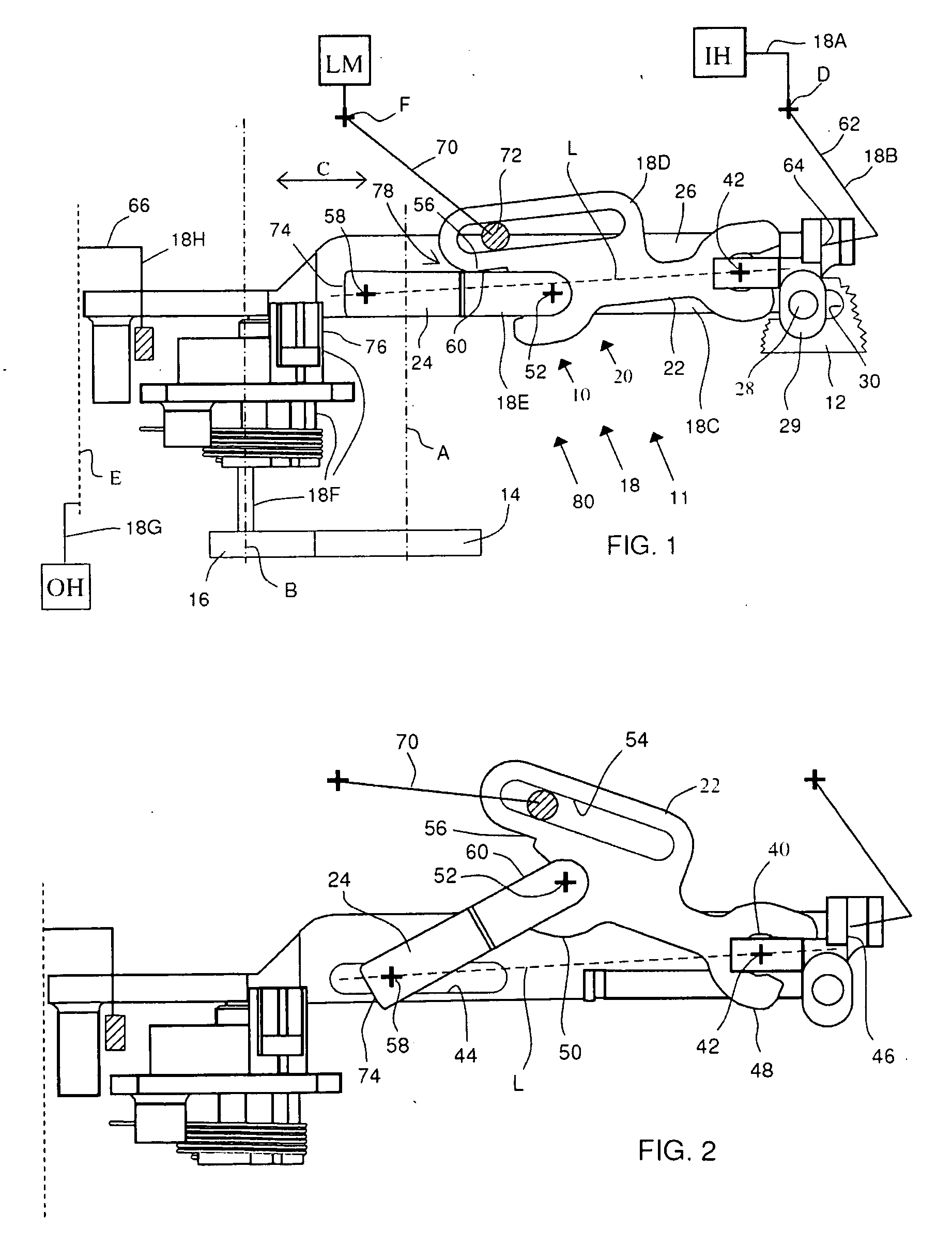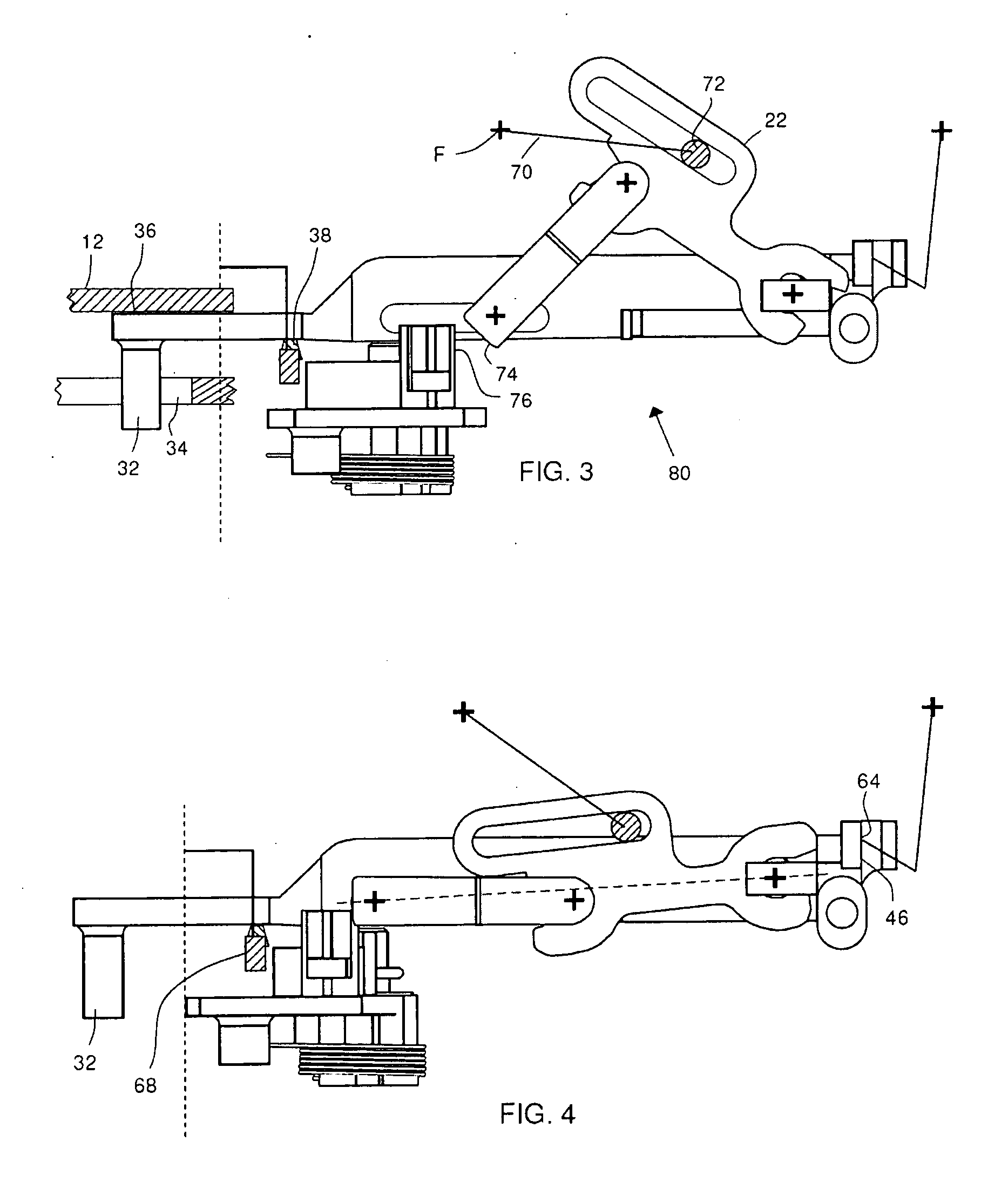Latch mechanism
a technology of latch mechanism and latch rod, which is applied in the direction of latch applications, mechanical devices, fastening means, etc., can solve the problems of large amount of energy required to operate, large volume, and high cost of relatively powerful motors, and achieve the effect of improving the latch mechanism
- Summary
- Abstract
- Description
- Claims
- Application Information
AI Technical Summary
Benefits of technology
Problems solved by technology
Method used
Image
Examples
Embodiment Construction
[0014]The figures show a latch mechanism 10 including a latch 11 having a latch chassis 12 (only part of which is shown). The latch 11 includes a latch bolt 14 (shown schematically in FIG. 1) rotatable about an axis A between a closed position and an open position. A pawl 16 is rotatable about a pawl axis B between an engaged position, at which the pawl 16 holds the latch bolt 14 in a closed position, and a disengaged position, at which the pawl 16 allows the latch bolt 14 to move to the open position.
[0015]The latch 11 will typically be provided on a rear edge of a door, such as a vehicle door, for example a car. The latch mechanism 10 includes an inside handle IH (shown schematically in FIG. 1) and an outside handle OH (shown schematically in FIG. 1). A transmission path 18 selectively couples the inside handle IH and the outside handle OH to the pawl 16. A toggle linkage 20 includes a first link 22 and a second link 24.
[0016]The latch mechanism 10 also includes a linkage carrier ...
PUM
 Login to View More
Login to View More Abstract
Description
Claims
Application Information
 Login to View More
Login to View More - R&D
- Intellectual Property
- Life Sciences
- Materials
- Tech Scout
- Unparalleled Data Quality
- Higher Quality Content
- 60% Fewer Hallucinations
Browse by: Latest US Patents, China's latest patents, Technical Efficacy Thesaurus, Application Domain, Technology Topic, Popular Technical Reports.
© 2025 PatSnap. All rights reserved.Legal|Privacy policy|Modern Slavery Act Transparency Statement|Sitemap|About US| Contact US: help@patsnap.com



